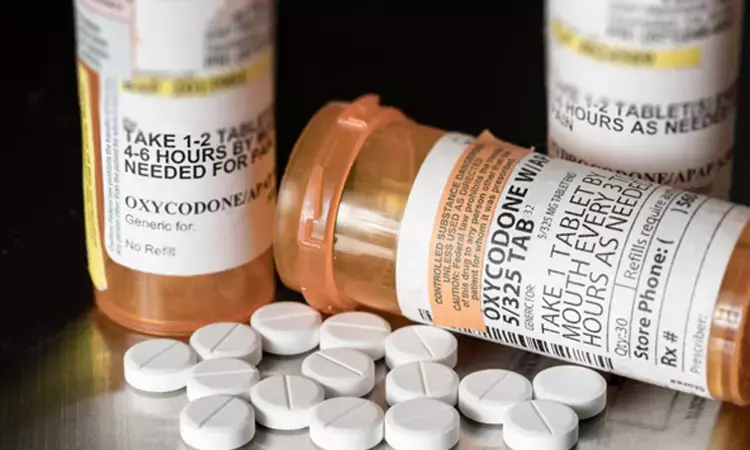- Home
- Medical news & Guidelines
- Anesthesiology
- Cardiology and CTVS
- Critical Care
- Dentistry
- Dermatology
- Diabetes and Endocrinology
- ENT
- Gastroenterology
- Medicine
- Nephrology
- Neurology
- Obstretics-Gynaecology
- Oncology
- Ophthalmology
- Orthopaedics
- Pediatrics-Neonatology
- Psychiatry
- Pulmonology
- Radiology
- Surgery
- Urology
- Laboratory Medicine
- Diet
- Nursing
- Paramedical
- Physiotherapy
- Health news
- Fact Check
- Bone Health Fact Check
- Brain Health Fact Check
- Cancer Related Fact Check
- Child Care Fact Check
- Dental and oral health fact check
- Diabetes and metabolic health fact check
- Diet and Nutrition Fact Check
- Eye and ENT Care Fact Check
- Fitness fact check
- Gut health fact check
- Heart health fact check
- Kidney health fact check
- Medical education fact check
- Men's health fact check
- Respiratory fact check
- Skin and hair care fact check
- Vaccine and Immunization fact check
- Women's health fact check
- AYUSH
- State News
- Andaman and Nicobar Islands
- Andhra Pradesh
- Arunachal Pradesh
- Assam
- Bihar
- Chandigarh
- Chattisgarh
- Dadra and Nagar Haveli
- Daman and Diu
- Delhi
- Goa
- Gujarat
- Haryana
- Himachal Pradesh
- Jammu & Kashmir
- Jharkhand
- Karnataka
- Kerala
- Ladakh
- Lakshadweep
- Madhya Pradesh
- Maharashtra
- Manipur
- Meghalaya
- Mizoram
- Nagaland
- Odisha
- Puducherry
- Punjab
- Rajasthan
- Sikkim
- Tamil Nadu
- Telangana
- Tripura
- Uttar Pradesh
- Uttrakhand
- West Bengal
- Medical Education
- Industry
Household with prescription drugs have increased risk of Opioid overdose: JAMA

In a new study published in the Journal of American Medical Association it was shown that, adult Oregon residents who live in homes with at least two people have an elevated risk of suffering an opioid overdose if there are available household prescription drugs, even if they do not have their own opioid prescriptions.
Prior research that looked at how household opioid prescriptions affected the likelihood of an opioid overdose only included commercial claims, did not account for fatal overdoses, and included only a small number of home prescription features. To better understand the risk of overdose, more comprehensive study is required. Michelle A. Hendricks and colleagues conducted this study in order to investigate the effect of household opioid availability and other home prescription characteristics related with persons' risks of fatal or nonfatal opioid overdose.
Adults in the Oregon Comprehensive Opioid Risk Registry database who lived in homes with at least two people were the subjects of a retrospective cohort research evaluating patient outcomes from January 1, 2015, through December 31, 2018. The period of data analysis was from January 26, 2023, to October 16, 2020. The primary exposures were the availability of home opioid prescriptions and the characteristics of household prescriptions. Data on hospital discharges, death certificates, and insurance claims were used to identify opioid overdoses. The availability of household opioid prescriptions and the features of those prescriptions for both people and households were modeled as 6-month cumulative time-dependent variables that were updated monthly. Multilevel logistic regression models were created, adjusted for demographic, household, clinical, and prescription data, to investigate the relationship between home prescription availability, household prescription features, and overdose.
The key findings of this study were:
The sample consisted of 1 691 856 people in 1 187 140 households, the majority of whom (53.2%) were women, of White racial descent (70.7%), lived in cities (75.8%), had commercial insurance (51.8%), had no Elixhauser comorbidities (69.5%), and had not filled any opioid prescriptions during the study period (57.0%).
Throughout the research period, 28 747 opioid overdose incidents were recorded.
The likelihood of an opioid-related overdose increased by 60% compared to people who had neither personal nor household opioid prescriptions in the previous six months, and it was greatest in cases when both the individual and another household member had received prescriptions for opioids during that time.
In conclusion, these findings highlight how crucial it is to inform patients about safe drug disposal and the dangers of using opioids at home.
Reference:
Hendricks, M. A., El Ibrahimi, S., Ritter, G. A., Flores, D., Fischer, M. A., Weiss, R. D., Wright, D. A., & Weiner, S. G. (2023). Association of Household Opioid Availability With Opioid Overdose. In JAMA Network Open (Vol. 6, Issue 3, p. e233385). American Medical Association (AMA). https://doi.org/10.1001/jamanetworkopen.2023.3385
Neuroscience Masters graduate
Jacinthlyn Sylvia, a Neuroscience Master's graduate from Chennai has worked extensively in deciphering the neurobiology of cognition and motor control in aging. She also has spread-out exposure to Neurosurgery from her Bachelor’s. She is currently involved in active Neuro-Oncology research. She is an upcoming neuroscientist with a fiery passion for writing. Her news cover at Medical Dialogues feature recent discoveries and updates from the healthcare and biomedical research fields. She can be reached at editorial@medicaldialogues.in
Dr Kamal Kant Kohli-MBBS, DTCD- a chest specialist with more than 30 years of practice and a flair for writing clinical articles, Dr Kamal Kant Kohli joined Medical Dialogues as a Chief Editor of Medical News. Besides writing articles, as an editor, he proofreads and verifies all the medical content published on Medical Dialogues including those coming from journals, studies,medical conferences,guidelines etc. Email: drkohli@medicaldialogues.in. Contact no. 011-43720751


